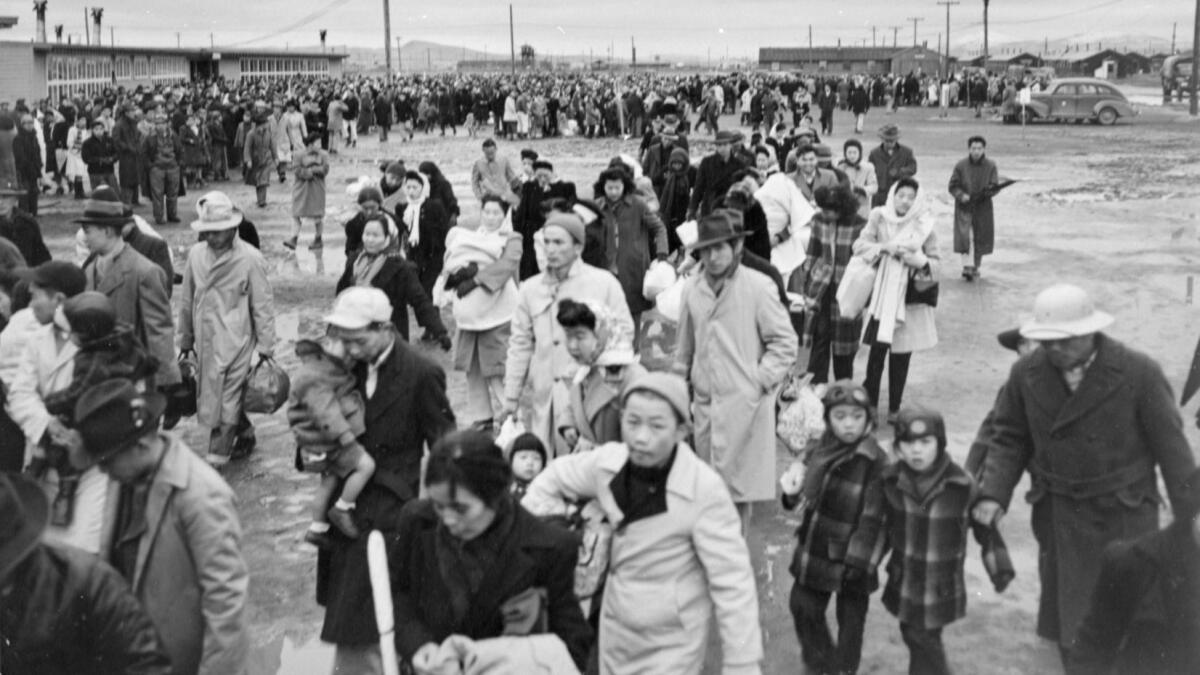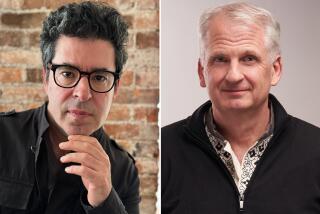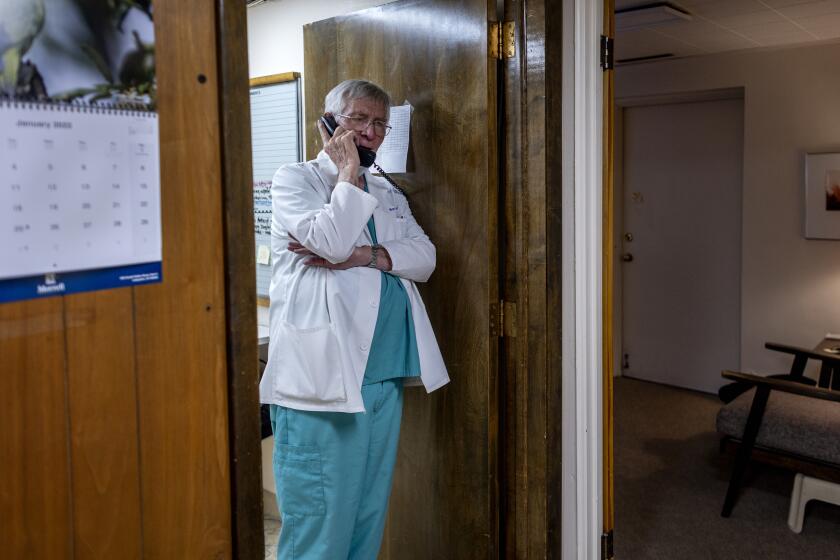Op-Ed: Japanese internment was wrong. Why do some of our leaders still try to justify it?

Today, the vast majority of thinking Americans believe the enslavement of millions of people of African descent in the U.S. was immoral. It’s not even a question. We acknowledge our country’s shameful treatment of Native Americans, who were stripped of their lands and forced onto desolate reservations. Similarly, we understand that the Nazis’ extermination of 6 million Jews during World War II was a sweeping offense against humanity that must never be repeated.
Why, then, does a vocal minority still argue that the incarceration of approximately 120,000 people of Japanese descent during World War II — two-thirds of whom were American citizens — remains open to debate? This week marks the 77th anniversary of the issuance of Executive Order 9066 by President Franklin Roosevelt, which set the stage for the incarceration. Despite the passage of time, there continues to exist a misinformed perspective on this order and its ramifications. Too often, including in the letters pages of the Los Angeles Times, some still contend that the imprisonment of Japanese American citizens and legal residents without due process has some legal, rational or moral standing. It does not.
In December, for instance, a letter appeared in The Times saying that in incarcerating Japanese Americans, Roosevelt acted “not out of xenophobia,” but rather “to protect citizens.” Would The Times have published a similar defense of slave holding or Nazism? Of course not, because those subjects are considered closed, no longer open for dispute in polite society.
This is no armchair historical debate. Some community leaders and politicians still attempt to use the incarceration to justify discriminatory policies.
This is no armchair historical debate. Some community leaders and politicians still attempt to use the incarceration to justify discriminatory policies. In 2015, for instance, the mayor of Roanoke, Va., called for the suspension of assistance to Syrian refugees, reminding his constituents that Roosevelt “felt compelled to sequester Japanese foreign nationals after the bombing of Pearl Harbor.” A year later, a former spokesman for a super PAC backing Donald Trump said on Fox News that the incarceration of Japanese Americans was a “precedent” for Trump’s plans to create a registry for immigrants from predominantly Muslim countries.
Why does this moral haze still obscure the incarceration? Why is it still considered acceptable to make arguments justifying this racist episode in American history? Is it a lack of education? Ignorance of history? An increasing disregard for facts in favor of emotion and Twitter? Or is it caused by bigotry and fear — two key factors that led to the incarceration in the first place?
The facts are clear. In 1942, two months after Pearl Harbor, Roosevelt signed Executive Order 9066. West Coast residents of Japanese ancestry were rounded up and transported to barren inland incarceration camps. Most spent the next three to four years behind barbed wire, surrounded by guard towers and deprived of their most basic constitutional rights. There were no charges nor trials. None of those incarcerated was ever convicted of espionage, sabotage or crimes against the nation. In addition to losing their homes, jobs and businesses, these Japanese Americans lost their sense of place at the American table of citizenship.
Enter the Fray: First takes on the news of the minute »
Despite this treatment, young Nisei — second-generation Japanese Americans — initially volunteered for and later were drafted into U.S. military service during WWII. Nearly a thousand died and nearly 10,000 were wounded or killed. Furthermore, the incarceration was never intended to “protect” the incarcerees — a comforting fiction belied by the guard-tower machine guns that pointed in, not out. In 1983, the federal Commission on Wartime Relocation and Internment of Civilians found that the incarceration was not based on military necessity, as federal officials claimed in 1942. Instead, it was driven by “race prejudice, war hysteria and a failure of political leadership.”
In response, President Reagan signed the Civil Liberties Act of 1988, which provided a presidential apology, individual monetary redress and a community trust fund. “We gather here to right a grave wrong,” Reagan said, noting that the incarceration occurred “without trial, without jury. It was based solely on race….”
How much clearer could the evidence be? Yet still some people see the incarceration as morally ambiguous and possibly even defensible. As we struggle today with complex issues of citizenship, immigration, terrorism, social justice and public safety, it is time to stop equivocating about the Japanese American incarceration, once and for all. We must look to the facts of the incarceration, not the propaganda, to inform our debate. If we resist fear and political hype, Americanism can continue as a democratic ideal not defined by race, religion, gender or sexual identity.
Mitchell T. Maki is president and chief executive of the Go for Broke National Education Center, a Los Angeles-based nonprofit that educates the public on the legacy of Japanese American veterans of World War II.
More to Read
A cure for the common opinion
Get thought-provoking perspectives with our weekly newsletter.
You may occasionally receive promotional content from the Los Angeles Times.










